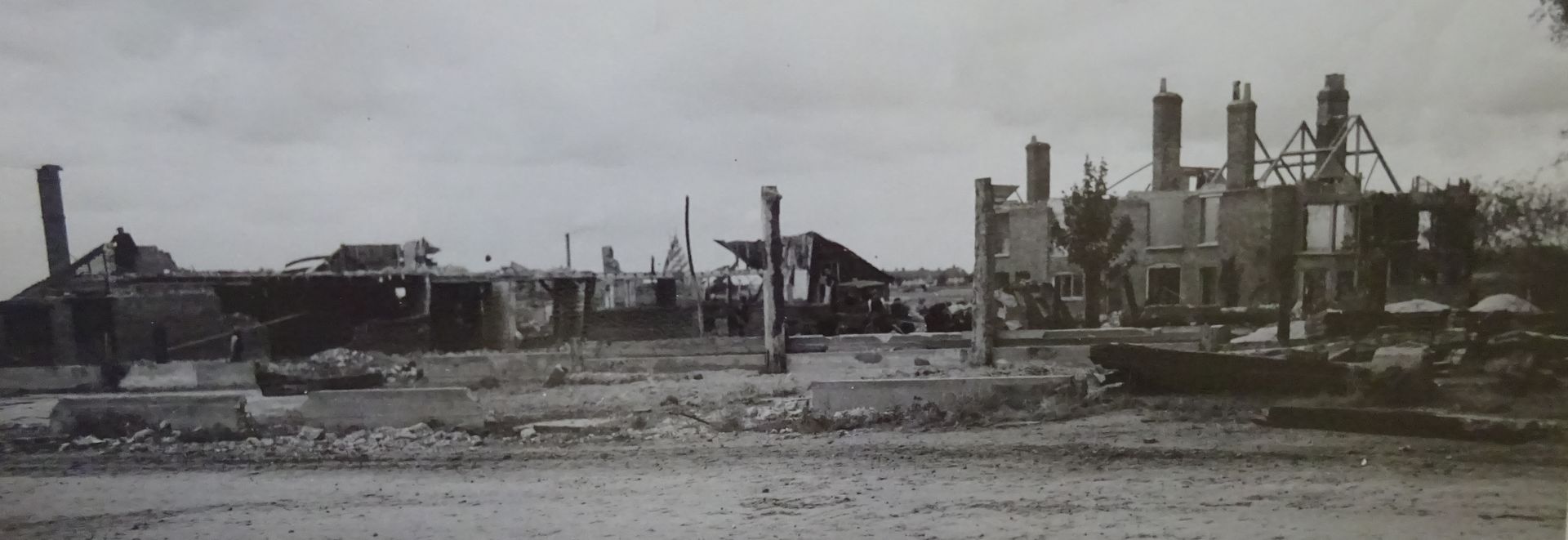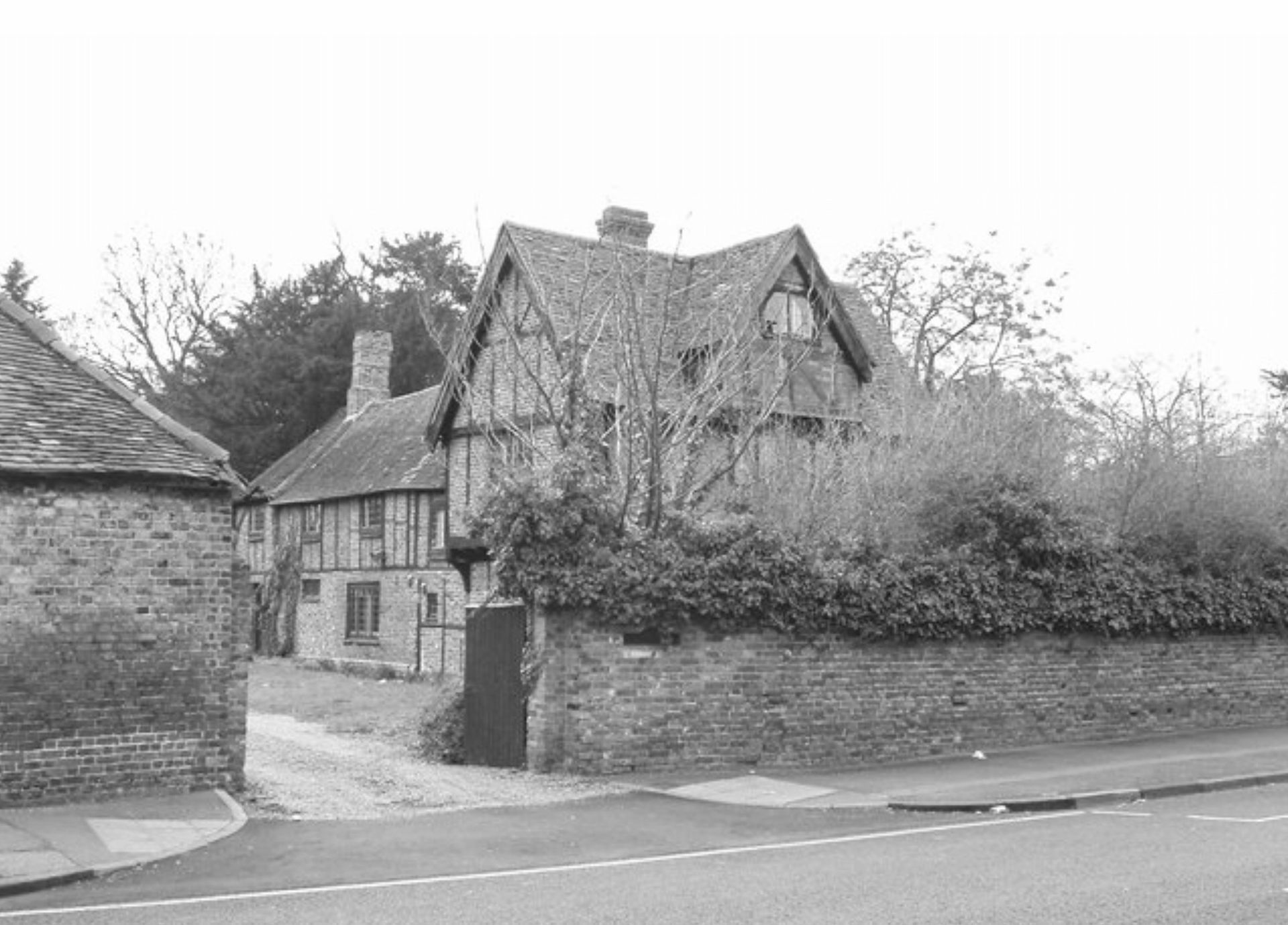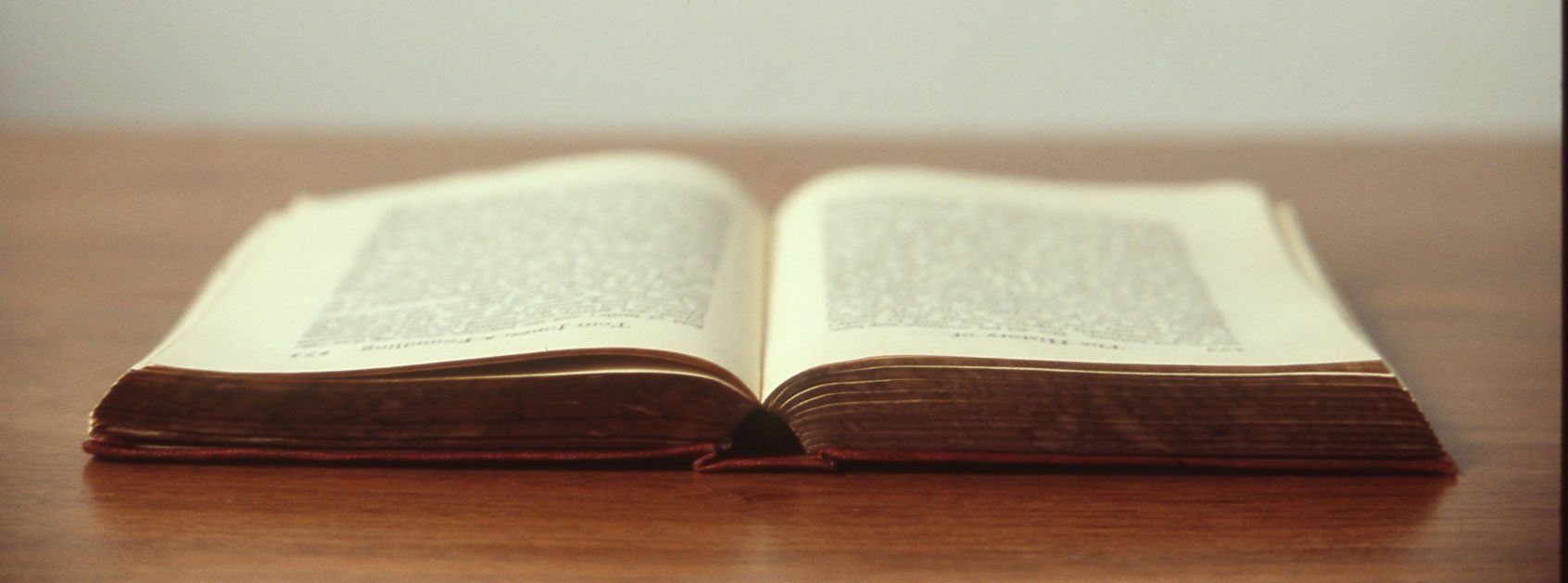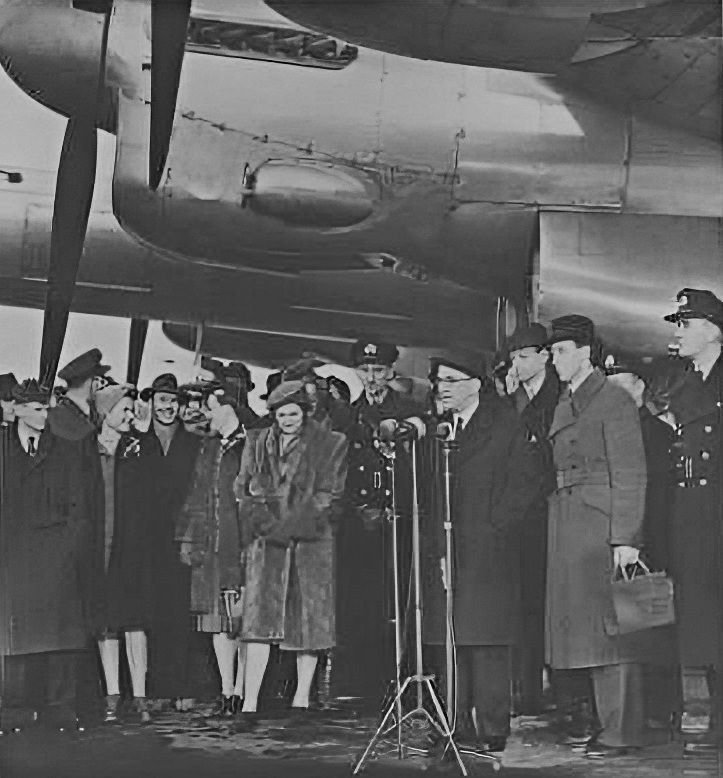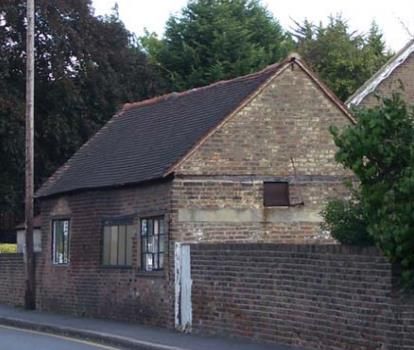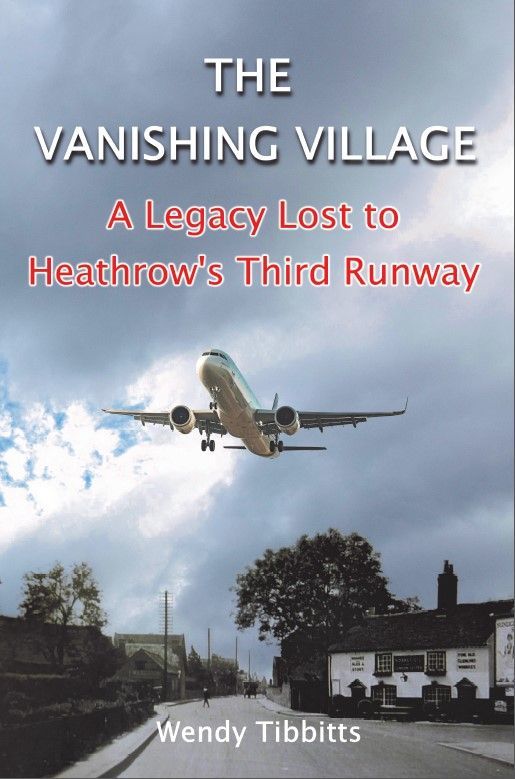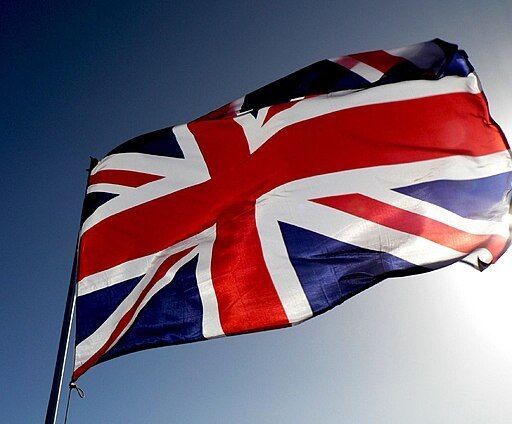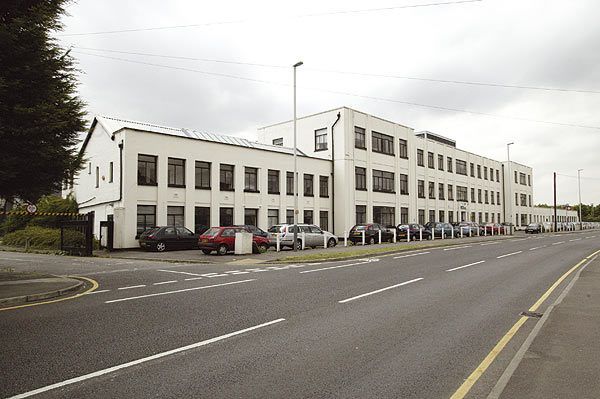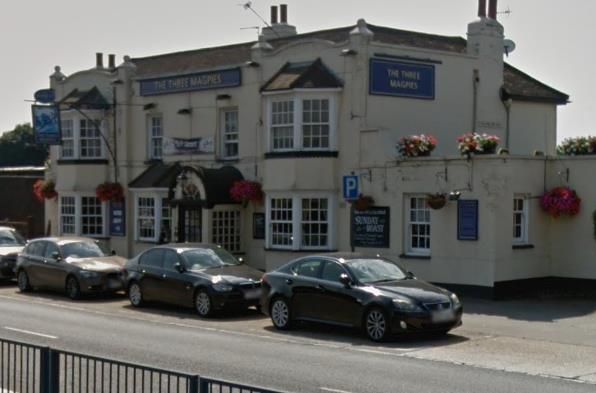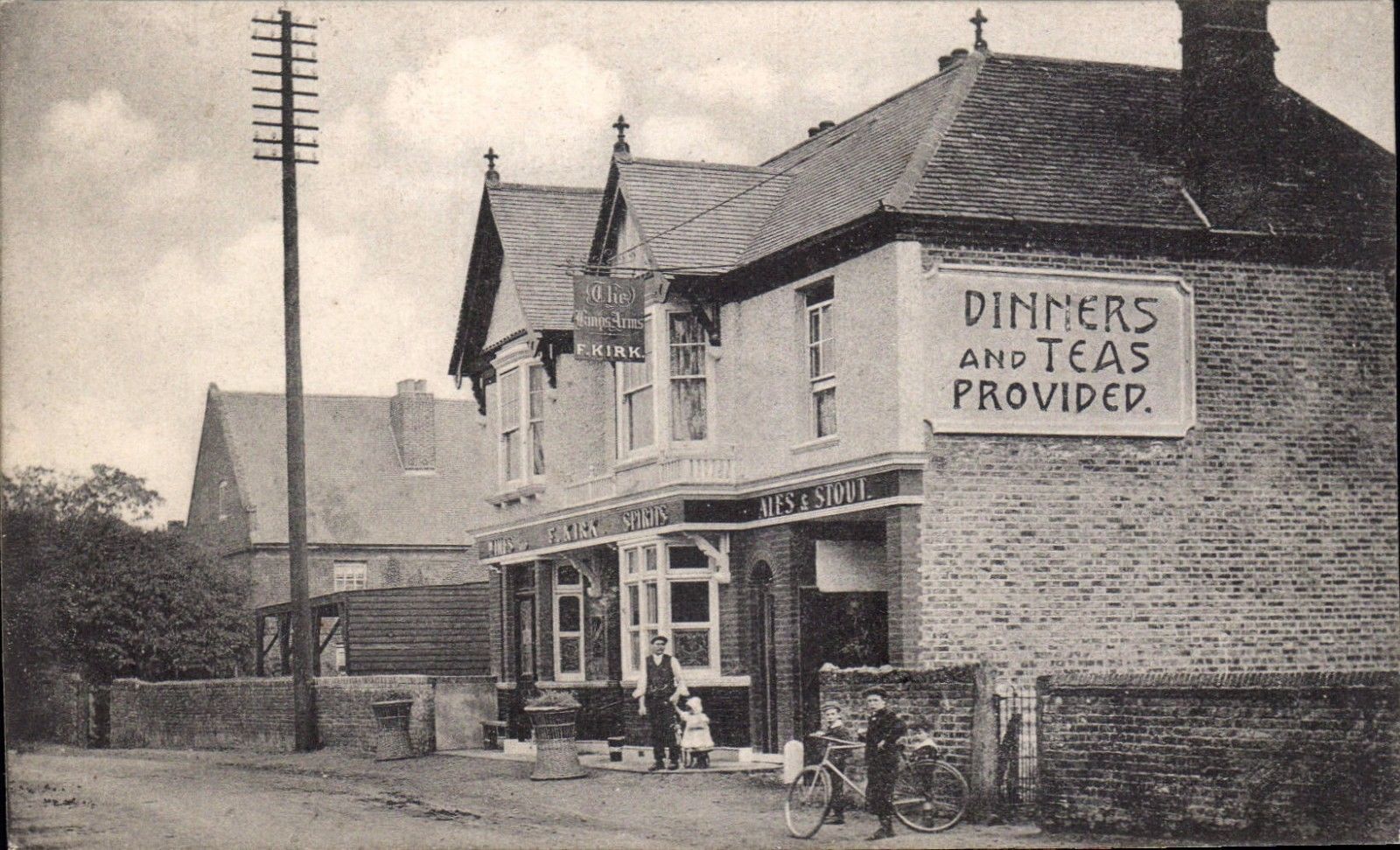Tales from Longford: The King's secret island
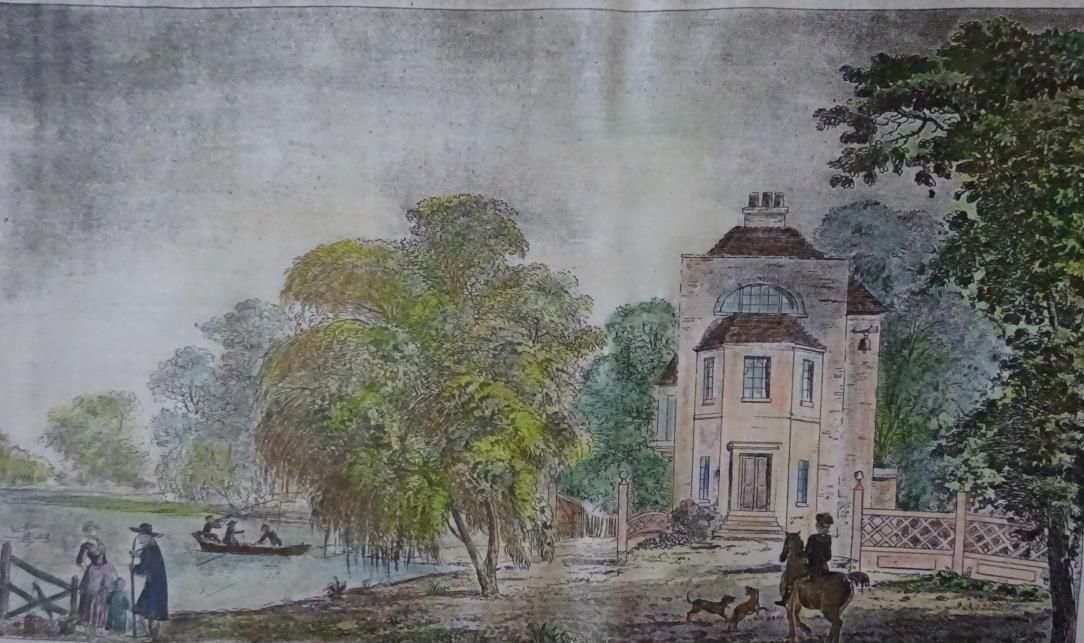
There is a four-acre inhabited island at Longford, Middlesex, little known to outsiders. The residents of the island would like to keep it that way. It is a peaceful haven surrounded by the River Colne in an unexpectedly tranquil setting considering its location in between the M4, the M25 and London’s Heathrow airport.
Ancient folk knew the advantage of making settlements near water. The water was needed for drinking, washing, crop irrigation and cattle rearing. The banks of the River Colne in Middlesex attracted the Saxon invaders who began to settle in clearings they made in the Middlesex Forest and gave the settlements appropriate names.[1] Longford is part of the parish of Harmondsworth which belonged to Harold Godwinson the last crowned Saxon King who died at the Battle of Hastings in 1066. William the Conqueror then gave the parish to Abbey of Holy Trinity, Rouen, before it passed to the Bishop of Winchester, and was acquired by King Henry VIII in 1543.[2] The King assigned the parish to a nobleman, but kept ownership of the island at Longford and it remained Crown property until 1874.
There was a mill on the island at Longford mentioned in the Domesday book of 1086. At various times it was repaired or replaced and the waterpower was used for a variety of commodities. Sometime before 1745 a substantial house, known as Island House, was built on the tip of the island nearest the bridge that led to the Bath Road. The site is now an apartment block. As well as the mill and its outbuildings there were two acres of meadow land, and footbridges led to smaller islands. The strip of land running along the opposite bank of the river, with its fishing rights, was also the King’s property.
Island House was one of the largest buildings in Longford. It was leased to various London gentry who used it as their country abode, and the meadow and mill were often leased separately. In 1747 when there were 16 taxpayers in Longford, Mr Hurst was paying nineteen shillings and sixpence in land tax for the island. By 1767, when George III was on the throne, there were 25 tax-paying households in Longford, and a Mr Burnet was paying taxes on Island House. George III’s long reign was marked by continual global conflicts and more taxes were needed in order to raise money to fight these wars. In 1770 a window tax was imposed on the residents. From the returns for Longford we can see that the two largest buildings in Longford were the Tudor-built ‘Yeomans’, and Island House.[3] Both had 19 windows and were paying £1.11s.6d in tax. By 1772 Thomas Willing was the occupant at Island House and paying the same amount of tax as his predecessor.
Thomas Willing was a Quaker businessman from London, originally from Bristol, whose brother was Mayor of Philadelphia, and whose nephew was later involved in the formation of the American Independence movement.[4] Thomas Willing died at Island House in 1773 and was buried in the chancel of St. Mary’s, Harmondsworth. In his will he left the lease of Island House to his niece, Dorothy Stirling whose husband was Admiral Sir Walter Stirling. Dorothy brought up her three children at Island House while her husband was away at sea, but by 1782 with her children all grown up she journeyed to Scotland to visit her married daughter. There she became ill and died aged 42. Her husband lived another four years and on his death his body was brought back to Harmondsworth to be buried in the church.
Dorothy had left the lease of Island House to her eldest son, Sir Walter Stirling, who was a banker in the City of London. His bank was doing well and he married an heiress from Kent. He also became an MP, a fellow of the Royal Society, and a High Sheriff of Kent. He and his wife, Susanna had a son and four daughters, but shortly after giving birth to her last daughter, Mother and daughter died. Both were buried in one coffin in St Mary’s church, Harmondsworth. More bad news was on the way for Sir Walter. There was a banking crisis in 1825 which resulted in a run on the banks and small bank’s like Sir Walters were unable to pay their depositors. The bank collapsed owing thousands to their customers. Sir Walter had to sell all his assets including his property in Kent and Middlesex. It took him two years, but he did eventually manage to pay all his debts and restore his reputation. When he died in 1832 aged 74 he was brought back to Harmondsworth and laid to rest at St Mary’s. In 1833, his brother, Charles, who was an Admiral like his father, died and was brought back to Harmondsworth to be buried next to his wife. This ended the 60-year association the Willing/ Stirling family had with Harmondsworth.
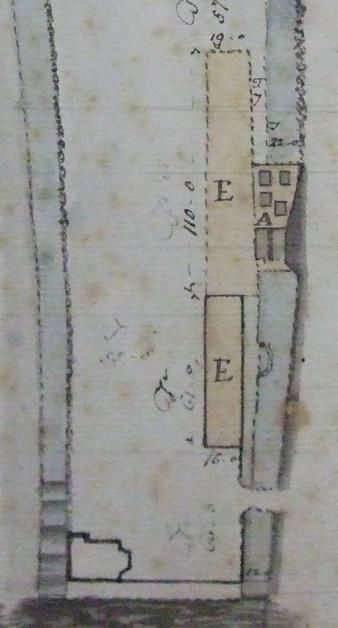
In April 1788 plans were put forward for a new mill to be built on the Island on the tributary nearest the village[5]This replaced the paper mill which had ceased running eighty years earlier. It is now the site of Colne Cottage. The new water Mill with its spacious yard and a range of workshops and buildings was leased to a series of calico printers by George III's Crown estates. In 1791 it was Robert Buchanan who was insuring he premises, [6] and in 1799 the tenants were Edmund Hill and John Thackrah we were paying rent of £17.7s.6d per annum.[7] Thackrah and Hill renewed the lease in 1806 for 41 years. Island House and two acres of meadow were leased to a member of the Jarvis family. The Jarvis family were a long-term dynastic Baptist family that had lived in Longford for centuries. Thomas Jarvis was occupying the Island House when he died in 1823. He and his wife did not have children, but he amassed a fortune as a property auctioneer in the late 18th century and when he died his bequests changed the fortunes of most of his nieces and nephews. He left land to two of his nephews, Thomas and William, and his bequest virtually doubled their landholdings. The condition of the bequests were that their mother, who was already living in Island House, would remain there for her lifetime and the two brothers would support her. In his will he rather pointedly left them the land and stipulated that they should carry on the farming business as tenants in common, “without any difficulties” implying that the brothers had had “difficulties” in the past and he was hoping to restore peaceful relations between them.
The leaseholders of the mill, Hill and Thackrah, sublet the house and business in 1833 when the sale of the lease was advertised as being sold “without reserve”. The house and its garden, together with a length of the opposite bank of the Colne, which had fishing rights, was sold to John Batchelor. Andrew Inight bought the lease to the Mill and its own patented machinery for printing of calico and other fabrics on a flat bed press, plus other presses, boilers, stoves, winches, and other equipment.[8] These two purchasers either did not know that the properties were leasehold, or hoped that if they kept quiet long enough the freehold would revert to them, but the Crown caught up with them.
On 13th May 1850 the pair’s solicitor was in court to defend an action brought by the Attorney General over who actually owned the island. Their defence was that they did not recognise the Crown as owners of the island and claimed that as they had not been paying “rent or profits” to the Crown for 20 years the island had reverted to their ownership. However the Receiver General for the Crown produced receipts that showed the rent had been paid annually in the name of the original leasees until the expiration of the lease in October 1847 when the payments ceased. After hearing all the evidence the Judge ruled in favour of the Crown and the defendants were evicted from the disputed land and premises.[9]
By 1874, with Queen Victoria on the throne, the Crown were selling the Freehold of the whole island and all the buildings on it. It included a separate island and a thin strip of land along the opposite river bank plus all the buildings.[10]
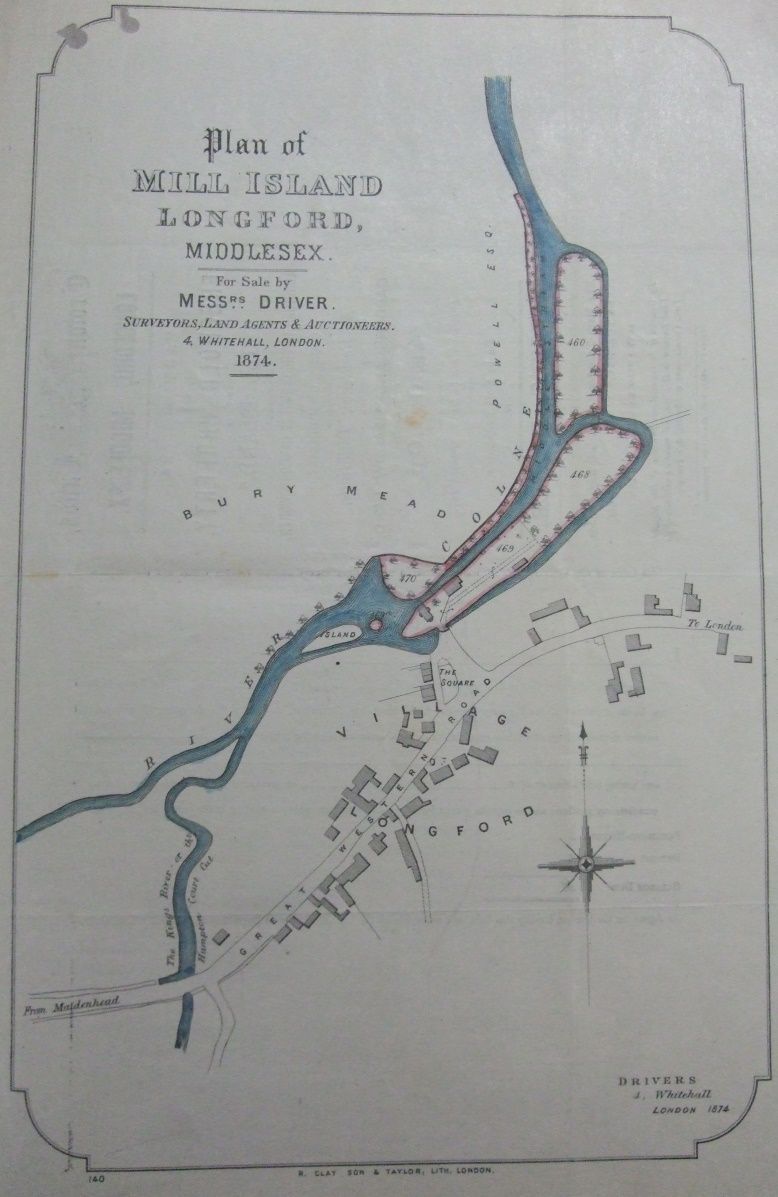
There is no mention of a mill in the sale details, but there are two meadows each of over an acre in land and a kitchen garden with fruit trees, where violets were being grown for sale. The main Island House is described as “Old-Fashioned” and there is a stable for two horses, a coach house, cottage, wash-house and baking oven. The occupier was James William Jarvis, Market Gardener, a yearly tenant who was under notice to quite at Michaelmas 1874. At the auction the whole island was bought for £750 by George Shuter, of London, a potato salesman. His Company, George Shuter Ltd, was a very successful Potato Sales business which was still trading at Covent Garden in 1971.
George Shuter also happened to be married to James William Jarvis’s eldest daughter and he had bought it so that his father-in-law could continue his tenancy. However, the 1870s was a bad time for British agriculture when there was a collapse in grain prices. Jarvis was struggling. By 1880 he was in the bankruptcy court.[11] He continued to live in Longford, but to make ends meet he became a travelling salesman before eventually moving to Park Lane, Hayes, where he died in 1894.
In 1892 the freehold of the Island was once more up for sale by auction, but failed to sell. It was then sold by private treaty. The Island passed through several more owners and in 1897 was put up for auction by Mr J.T. Lane who advertised the remodelled family home as a ‘Summer residence’ or ‘Hunting Box’.[12] A London businessman, Thomas Fuller Toovey, bought it as a home for his retirement. Although only 40 he had made his money designing and manufacturing bicycles. He moved into his house on 30 June 1898. He had paid £1080 for it and spent another £800 in alterations.[13] He and his wife lived there most summers, but they would let it fully furnished for three months or more each October. By November 1905 Toovey was selling the entire contents of the house and outbuildings, which included a 8hp Peugeot motor car and a 2¾ hp motor bicycle, as he was “going abroad”, although he retained the freehold.[14] From December 1905 Joseph Perrin, a button merchant had a seven-year lease on Island House. The Perrin family attended Poyle Congregational church where their son Edward was Secretary for the newly formed Poyle and Colnbrook Congregational Institute.
It appears that Joseph Perrin did not renew his lease because by February 1913 the house had been redecorated and was available for rent. In October 1914 Mr Frank Pagesmith was given a seven-year lease on Island House at £120 p.a. There was a dispute however in August 1915 between owner and tenant over some tools and equipment on the property that Pagesmith had agreed to purchase from T.F. Toovey. The payment was not made and Toovey took Pagesmith to Uxbridge County Court before successfully getting his payment.
Mrs Pagesmith was a member of the Harmondsworth Women’s Institute. In August 1923 she hosted a summer garden party for all its member in the “old-world” garden of Island House. There was a jazz band, punting, games and refreshments. The party ended at 10pm with fireworks.[15] The family were still there in 1926 when Mrs Pagesmith was advertising for a house-keeper. By 1939 Frank Pagesmith was dead but his wife and son, Gordon, were still living in Island House. Gordon had been a City of London rubber broker, but in 1930 had been declared bankrupt and was forbidden to deal after some of his speculations left a £56,000 deficit. By 1939 he was calling himself an “Estate Manager”. Another son, Norman was a Music Hall entertainer and the third son, Saxon, had the Fairfax plant nursery in Hounslow. Gordon and his mother breached the blackout regulations in 1941 and were fined 20 shillings. They continued to live at Island House until 1948 when Blanche Pagesmith died aged 84. Gordon moved to Staines and died there in 1957.[16]
By the time the 1939 register was drawn up there are several other residences on the Island. In Island Cottage lived Mr and Mrs Howard. Colne Cottage housed Mr and Mrs Begg. The Rees lived at Banco, and there were two other houses: Watersmeet, and Riverside.
The island has continued to be a delightful, hidden, part of residential Longford. Now the island is under threat from the proposed Heathrow Airport Expansion. If the third runway is built the island will disappear, the buildings will be demolished and the tranquil river Colne, which has given sustenance and industry to Longford for centuries, will disappear into an underground culvert. We must treasure the island and its history while we can.
[1] Bate, G.E. And So Make a City Here, (Hounslow, 1948)
[2] Impey, Edward, The Great Barn of 1425-27 at Harmondsworth, Middlesex. (Swindon, 2017)
[3] London Metropolitan Archives, LMA/4067/A/03/005
[4] Tibbitts, Wendy, Longford: A Village in Limbo, (Dorset, 2022)
[5] The National Archives, MPI 653, part 2, DSCF7826.jpg
[6] London Metropolitan Archives MS 11936/378/588220
[7] The National Archives E 367/6134
[8] Windsor and Eton Express - Saturday 26 January 1833
[9] London Daily News - Tuesday 14 May 1850]
[10] The National Archives, MPI 653, part 1
[11] https://www.thegazette.co.uk/London/issue/24902/page/5775/data.pdf
[12] Middlesex County Times - Saturday 08 May 1897
[13] 1910 Valuation Survey Field Book. TNA IR 58/39632
[14] West Middlesex Gazette - Saturday 25 November 1905
[15] Uxbridge & W. Drayton Gazette - Friday 10 August 1923
[16] Uxbridge & W. Drayton Gazette - Friday 14 March 1941
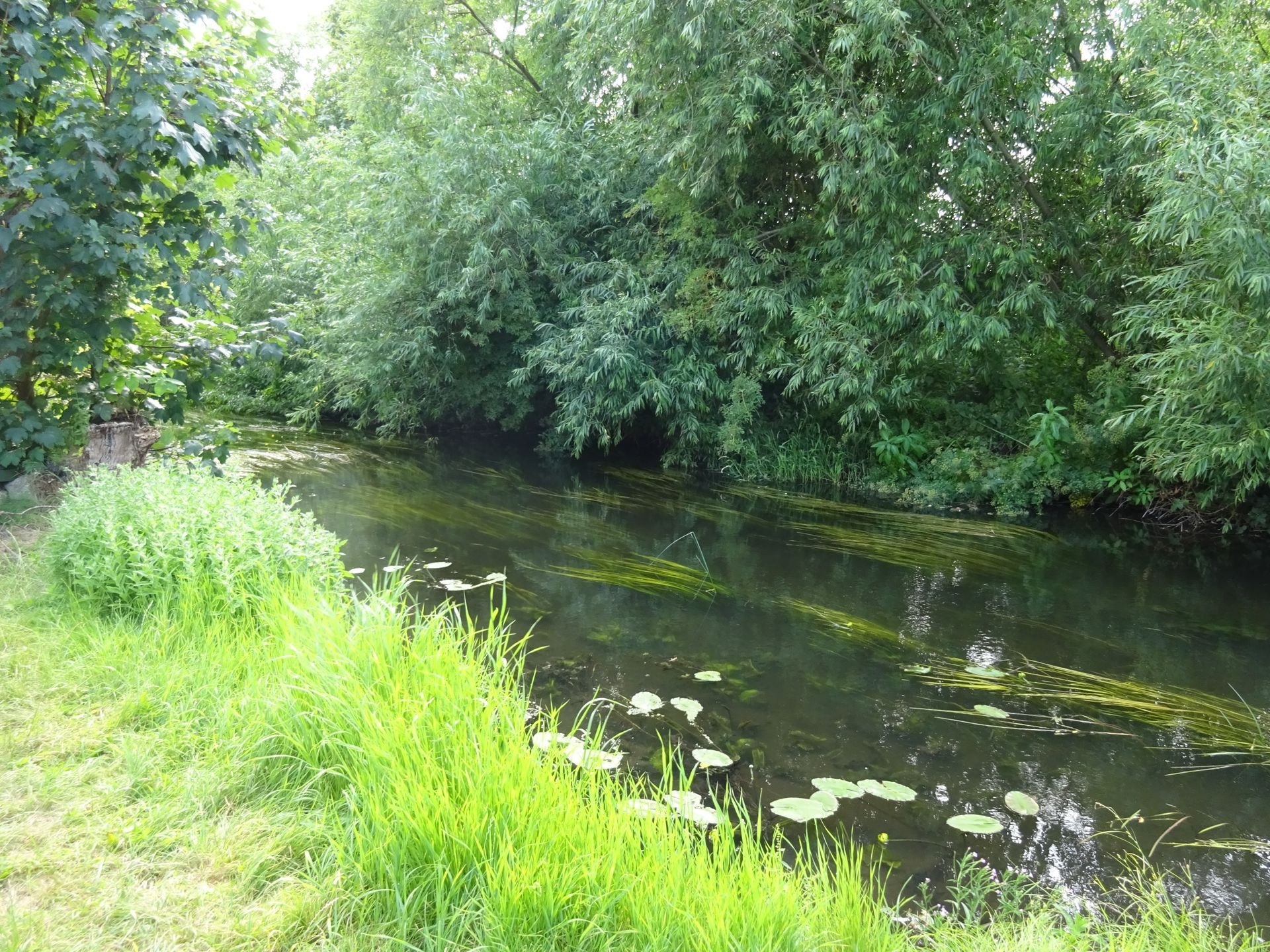
For more on the history of Longford read
“Longford: A Village in Limbo” by Wendy Tibbitts
For a “Look Inside” option for this book go to https://b2l.bz/WUf9dc or scan the QR code:

